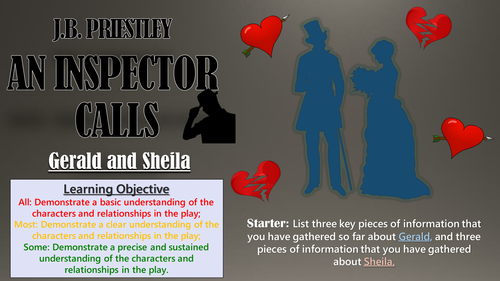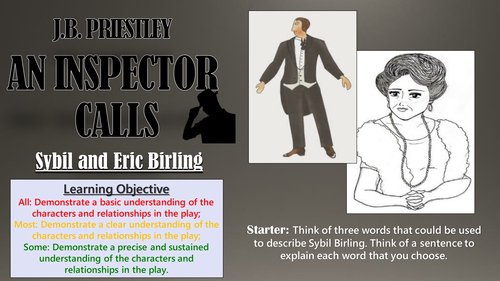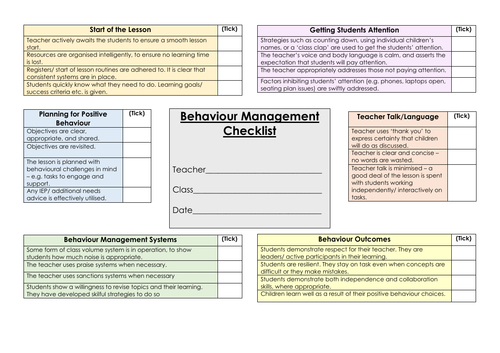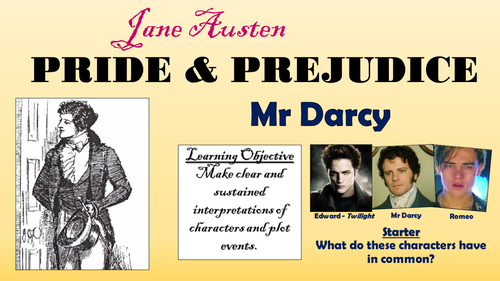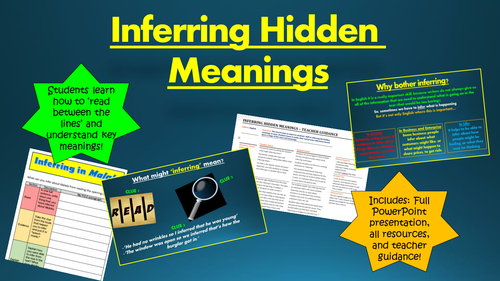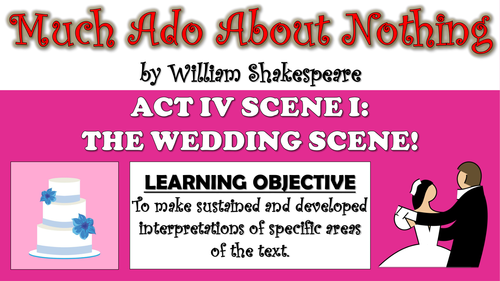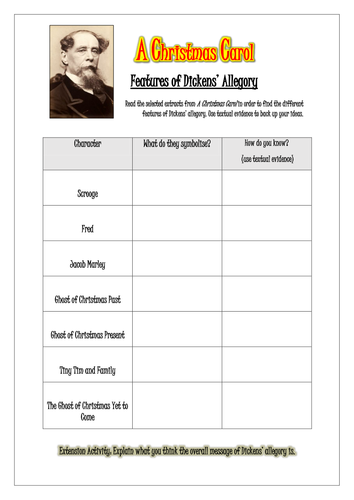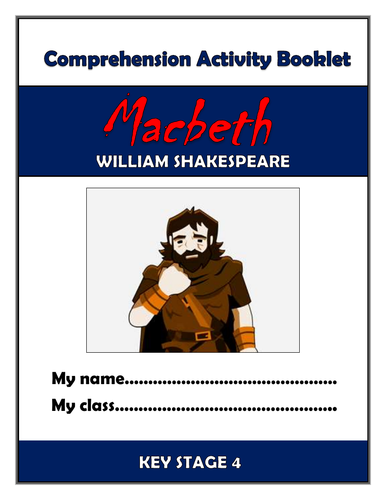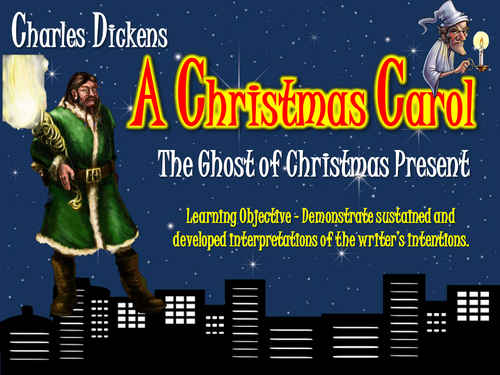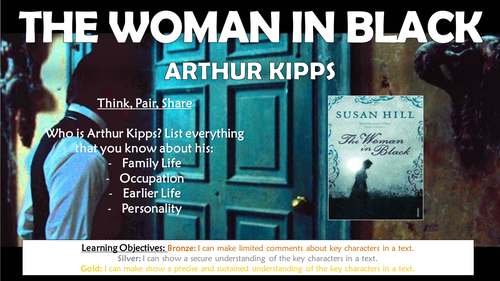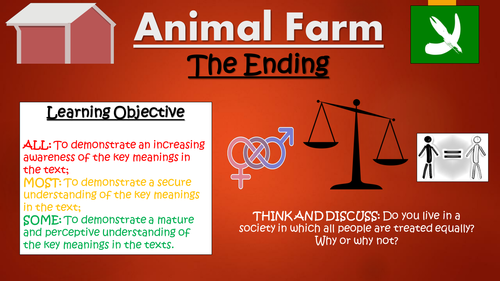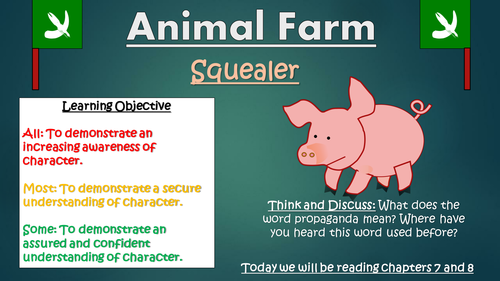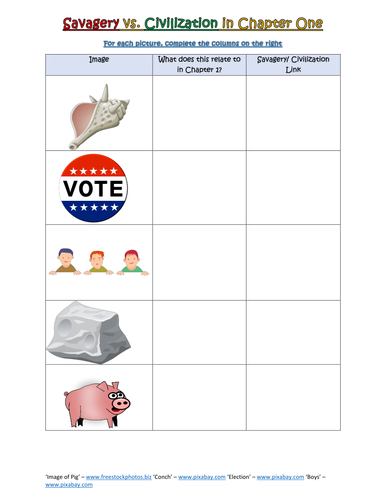
3k+Uploads
1906k+Views
2238k+Downloads
New teachers

Lord of the Flies: The Ending
This interesting and highly-stimulating lesson enables students to make clear and sustained interpretations about the final chapters of William Golding’s Lord of the Flies. Students engage analytically with the key events, characters, and quotations in the closing stages of the novel, and interpret patterns in the development of their behaviour from earlier sections of the text.
The lesson follows a clear, logical, bite-size learning journey, which guides students towards differentiated learning objectives. Over the course of this journey, they become able to:
- Sort key events from earlier chapters to re-familiarise themselves with the events of the text;
- Think creatively about how different objects, ideas, and characters are represented throughout different sections of the text;
- Read and understand Chapters Eleven and Twelve of the play, with a particular focus upon how the behaviour of the key characters has developed over time;
- Chart the balance between civilization and savagery over the course of the novel, justifying decisions based upon relevant textual evidence;
- Analyse the how the behaviour of the key characters alters over the course of the novel, through answering a structured exam-style question;
-Peer assess each other's learning attempts.
This resource pack includes:
- A visually engaging whole-lesson PowerPoint presentation;
- Plot Cards for the card-sorting activity;
- Links to the extracts of the text needed for the lesson (Chapters Eleven and Twelve in this case);
- Graph template with justification boxes for the development activity;
- A logically scaffolded essay template;
- A detailed lesson plan, complete with what the teacher and students should aim to achieve at each stage of the lesson.
All images are licensed for commercial use, and are cited on the final slide of the PowerPoint.

Out of the Blue - Simon Armitage - 9/11 Poem
These informative and engaging resources enable students to build the skills needed to interpret and analyse the langauge used in poems. These resources also give students a strong foundation knowledge, including the SMSC implications, of the events of 9/11 - an important historical day that should never be forgotten.
Students learn through the following tasks:
- Collecting and discussing knowledge of the events of the day through an interactive starter task;
- Reading the poem 'Out of the Blue' and identifying the descriptive devices throughout the poem;
- Discussing a model analytical paragraph about the language used in the poem, in order to form their own success criteria;
- Using a template to form their own analytical paragraphs about the language used in the poem;
- Using peer or self-assessment in order to establish their success at analysing language.
The following resources are provided:
- Engaging and colourful step-by-step PowerPoint
- Poem
- Teacher lesson guidance;
- Identifying worksheet;
- Analysis template;
- Writing to analyse help-sheet
- Analysis model
All images are licensed for commercial use, and are cited on the final slide of the PowerPoint.

An Inspector Calls: Gerald and Sheila
This interesting and engaging lesson enables students to build their understanding of the relationship between Gerald and Sheila, two of the main characters in ‘An Inspector Calls.’ In particular, students learn about about how both characters contribute to the downfall of Eva Smith, and how their relationship is affected as details of their actions emerge.
The lesson follows a clear, logical, bite-size learning journey, which guides students towards differentiated learning objectives. Over the course of this journey, they become able to:
- Recall and understand the key features of Gerald and Sheila's character profiles;
- Link Gerald and Sheila to the historical context of the play;
- Read and understand the section of the play in which Gerald is interviewed by the inspector;
- Analyse the effect of Gerald's revelations on the relationship of Gerald and Sheila;
- Create a diary-entry piece in which they consider Gerald's character and relationships with both Sheila and Daisy Renton;
-Peer/self-assess learning attempts.
This resource pack includes:
- A visually engaging whole-lesson PowerPoint presentation;
- A clear and interesting worksheet for the development task (with answer sheet);
- An extract from Act 2 of the play for students to read and interpret;
- Guidance for completing diary entries;
- A detailed lesson plan, complete with what the teacher and students should aim to achieve at each stage of the lesson.
All images are licensed for commercial use, and are cited on the final slide of the PowerPoint.

An Inspector Calls: Sybil and Eric Birling - Double Lesson!
This interesting and engaging double lesson enables students to build their understanding of Sybil and Eric Birling, two of the main characters in ‘An Inspector Calls.’ In particular, students learn about how both characters contribute to the downfall of Eva Smith, and note the variation in their sense of responsibility. This is linked to Priestley’s overall message regarding community and responsibility in Edwardian Britain.
The lesson follows a clear, logical, bite-size learning journey, which guides students towards differentiated learning objectives. Over the course of this journey, they become able to:
- Recall and understand the key features of Sybil and Eric's character profiles;
- Link Sybil and Eric to the historical context of the play;
- Read and understand the sections of the play in which Sybil and Eric are interviewed by the inspector;
- Analyse each of the characters in response to key questions;
- Compare the two characters, in terms of: their attitudes to the working classes; their attitudes towards the inspector, and their sense of responsibility for Eva Smith's death;
-Peer/self-assess learning attempts.
This resource pack includes:
- A visually engaging whole-lesson PowerPoint presentation;
- A clear and interesting worksheet on interpreting Mrs. Birling's character (with answer sheet);
- Extracts from Act 2 and Act 3 of the play for students to read and interpret;
- A scaffolded template for students to complete the comparison task;
- A detailed lesson plan, complete with what the teacher and students should aim to achieve at each stage of the lesson.
All images are licensed for commercial use, and are cited on the final slide of the PowerPoint.

Private Peaceful - KS3 Comprehension Activities Booklet!
This resource booklet contains a wide range of age-appropriate, engaging, and meaningful comprehension activities for use throughout the reading of Michael Morpurgo’s ‘Private Peaceful.’ Teachers have found them particularly useful in comprehension or guided reading sessions. They are perfect for aiding the progress of children towards meeting the KS3 expectations within the new National Curriculum framework. Children have found these resources extremely engaging, and for teachers there is explicit information within each task regarding which comprehension strands the task is designed to demonstrate. They also relate to key extracts, characters, and themes from the story, ensuring that children gain a deep understanding of the text.
Activities within the booklet include:
- ‘Context: World War One’ - to enable students to demonstrate that they can: ‘Know the purpose, audience and context of the writing and drawing on this knowledge to support comprehension.’
- ‘Morpurgo’s Description’ - to enable students to demonstrate that they can: ‘Know how language, including figurative language, vocabulary choice, grammar, text structure and organisational features, present meaning.’
- ‘Horrible Hanley’ - to enable students to demonstrate that they can: ‘Study setting, plot, and characterisation, and the effects of these.’
- ‘Vocabulary Inspector’ - to enable students to demonstrate that they can: ‘Learn new vocabulary, relating it explicitly to known vocabulary and understanding it with the help of context and dictionaries.’
Plus many, many more activities (the booklet is 21 pages in length!) I’ve also added it as a PDF in case the formatting differs on your computer.
All images are licensed for commercial use, and are cited on a separate document (included).

Learning Walk/ Teacher Development Checklists!
These comprehensive checklists have been created to aid school leaders when performing learning walks with a particular focus e.g. questioning, differentiation, etc. Clearly structured and organised, they present a central idea surrounded by a breakdown of a number of its key components.
For the user, this layout provides a simple reference list of each of the desirable skills, categorised appropriately. The checklists also provide an alternative to regular feedback methods, which often focus too heavily on the standard or ‘judgement’, as opposed to being a developmental tool.
Alternatively, these are really handy for teachers looking to develop their practice in the key teaching areas listed below. Included in the pack are checklists for:
-Questioning
-Differentiation
-Utilising Resources (including support staff)
-Engagement
-Building Literacy Skills
-Planning and Expectations
-Building Learning Power
-A blank template for you to design your own based upon your own focus
Note: The checklists are provided as both PDFs (for formatting stability) and Word (so that you can edit them easily) - the Word versions are in the zipfile.
Many Thanks

Pride and Prejudice - Elizabeth Bennet
In this engaging and informative lesson, students are enabled to make clear and insightful interpretations of Elizabeth Bennet – the chief protagonist in Jane Austen’s Pride and Prejudice. In particular, students learn about her key characteristics- such as her strong ideas, wit, intelligence, grace, and good humour – and relate these to ideas of societal expectations of the time.
The lesson follows a step-by-step learning journey, in which students learn through:
- Playing a fun and interactive quiz to determine the key events and family life of Elizabeth Bennet;
- Establishing her characteristics and traits, utilising textual evidence;
- Analysing Elizabeth's character in relation to the expectations of society in the Regency Era;
- Creating clear and creative diary entries, using an in-depth understanding of Elizabeth's character;
- Peer assessing each other's learning attempts.
Included is:
- Whole lesson PowerPoint - colourful and comprehensive;
- 'Character Traits of Elizabeth' task resources - with teacher answer sheet;
- 'Elizabeth in Context' task resources - with teacher answer sheet;
- Comprehensive lesson plan.
There are also opportunities for group learning, peer assessment, and whole class discussion. These resources were originally taught to GCSE students, but with subtle adaptations they have also been used with both younger and older (up to A Level) students.
All images are licensed for commercial use, and image rights are listed on the last page of the presentation.

Pride and Prejudice - Mr Darcy
In this engaging and informative lesson, students are enabled to make sustained and developed interpretations regarding the introduction and development of the character of Mr Darcy in 'Pride and Prejudice.' In particular, students learn about how he at first appears solely proud and aloof, before studying the events through which the more subtle aspects of his character emerge.
The lesson follows a step-by-step learning journey, in which students learn through:
- Establishing how Darcy fits the criteria of the 'Romantic Hero;'
- Reading and understanding how Darcy is introduced in the novel, using relevant textual evidence;
- Tracking how his character develops through the notable events of the novel;
- Analysing how Austen introduces and develops Darcy's character through plot events and Elizabeth's thoughts;
- Peer assessing each other's learning attempts.
Included is:
- Whole lesson PowerPoint - colourful and comprehensive;
- Extract from Chapter 3;
- 'Development of Darcy' task resources - with teacher answer sheet;
- Supportive and clear essay template;
- Comprehensive lesson plan.
There are also opportunities for group learning, peer assessment, and whole class discussion. These resources were originally taught to GCSE students, but with subtle adaptations they have also been used with both younger and older (up to A Level) students.
All images are licensed for commercial use, and image rights are listed on the last page of the presentation.

Inferring the Hidden Meanings in Texts
This lesson enables students to 'read between the lines' in texts and infer significant meanings. Utilising a range of visual, kinaesthetic, and reading tasks, students not only gain an increased understanding of the importance of inference in English, but also gain an awareness of its importance in other areas of life.
The lesson follows an interesting and engaging step-by-step learning journey, which helps students to:
- Define what inference is;
- Understand the importance of inference;
- Infer what they can see;
- Infer what they hear;
- Infer what they read, using key sentence starters and textual evidence;
- Formulate P.E.E. inference responses, where necessary utilising the included scaffolds and help-sheets;
- Peer/self assess their learning attempts.
Included in this resource pack:
- Full whole-lesson PowerPoint presentation;
- P.E.E scaffold sheet;
-Writing to analyse helpsheet;
- Pictures required for development task;
- Teacher guidance
All images are licensed for commercial use, and are cited on the final slide.

Much Ado About Nothing - Act IV Scene I - The Wedding Scene!
This engaging, in-depth lesson enables students to understand how the plot events in the wedding scene create a sense of climax throughout Act IV Scene I of Much Ado About Nothing. In particular, the lesson focuses upon the language used by Claudio and Leonato to denounce Hero (with links to the expectations within the social/historical context of the renaissance), the dramatic response to the allegations, and Benedick's altering priorities.
The lesson follows a step-by-step learning journey, in which students learn through:
- Identifying the key events of the plot leading up to the wedding scene.
- Reading and comprehending the predominant plot events in Act IV Scene I.
- Understanding the idea of the patriarchal family society, and considering the accusations directed at Hero in light of this.
- Completing an essay style response in which they consider how the key plot events contribute to a sense of climax within the scene.
- Peer assessing each other's learning attempts.
Included is:
- Whole lesson PowerPoint - colourful and detailed - just download and teach from it!
- Cards for card-sorting activity;
- Wedding Scene worksheet (and teacher answer sheet);
- Analysis template with success criteria for creating well-structured responses;
- Comprehensive lesson plan.

A Christmas Carol: Allegory!
This engaging and informative lesson enables students to make insightful and developed interpretations of Dickens’ use of allegory throughout ‘A Christmas Carol.’ In particular, they explore how Dickens utilises various characters and events to reveal hidden meanings about selfishness, greed, and hidden ugliness in Victorian society.
The lesson follows a step-by-step learning journey, in which children learn through:
- Defining the key term ‘allegory’ and establishing the key message of Dickens’ allegory;
- Reading and understanding the selected extracts to determine how Dickens’ characters are allegorical;
- Demonstrating an understanding of the allegorical meanings of individual events and scenes in the novel, through a fun interactive game!
- Analysing the extent to which the allegory is effective in presenting Dickens hidden message;
- Peer assessing each other’s learning attempts.
Included is:
- Whole lesson PowerPoint - colourful and comprehensive;
- Selected extracts demonstrating Dickens’ allegory;
- Features of Dickens’ Allegory Worksheet (and completed answer sheet for teachers);
- Analysis template with success criteria for creating well-structured responses;
- Comprehensive lesson plan.
There are also opportunities for group learning, peer assessment, and whole class discussion. This was originally taught to mixed ability year 10 groups, but can easily be differentiated for groups of different ages and abilities.
All images are licensed for commercial use, and image rights are listed on the last page of the presentation.

The Five Oceans - Knowledge Organiser!
This clear, detailed and visually-appealing resource offers a complete reference point for students revising knowledge relating to the five oceans, as a part of their study of locational knowledge in geography. It contains comprehensive sections on:
Overview and world map;
The Five Oceans Facts;
The Five Oceans by Size;
Deepest Points in the Oceans;
Interesting Ocean Features;
Top Ten Ocean Facts.
The resource is designed to be printed onto A3, and is provided as both a PDF and a Word version (so that you can edit if you want to). All images used are licensed for commercial use and are cited on a separate document (included). The resource is most suitable for students in KS1 or KS2.

Macbeth Comprehension Activities Booklet!
This resource booklet contains a wide range of age-appropriate, engaging, and meaningful comprehension activities for use throughout the reading of William Shakespeare’s ‘Macbeth.’ Teachers have found them particularly useful in exam revision, comprehension tasks, or guided reading sessions. They are perfect for aiding the progress of students towards meeting the KS4 expectations within the new National Curriculum framework - this makes the tasks suitable for all examining bodies. Students have found these resources extremely engaging, and for teachers there is explicit information within each task regarding which comprehension strands the task is designed to demonstrate. They also relate to key extracts, characters, and themes from the story, ensuring that students gain a deep understanding of the play.
Activities within the booklet include:
- ‘Context: Shakespearean Britain’ - to aid students with ‘Drawing on knowledge of the purpose, audience and context of the writing, including its social, historical and cultural context and the literary tradition to which it belongs, to inform evaluation;’
- ‘Shakespeare’s Description’ - to aid students with ‘Analysing a writer’s choice of vocabulary, form, grammatical and structural features, and evaluating their effectiveness and impact;’
- ‘Lady Macbeth’ - to aid students with ‘Seeking evidence in the text to support a point of view, including justifying inferences with evidence;’
- ‘Editing the Play’ - to aid students with ‘Making an informed personal response, recognising that other responses to a text are possible and evaluating these.’
Plus many, many more activities (the booklet is around 30 pages in length!) I’ve also added it as a PDF in case the formatting differs on your computer.
All images are licensed for commercial use, and are cited on a separate document (included).

A Christmas Carol: The Ghost of Christmas Present!
This engaging and informative lesson enables students to make insightful and developed interpretations regarding ‘The Ghost of Christmas Present’ in ‘A Christmas Carol.’ In particular, they explore the key messages about generosity and human kindness that Dickens aims to get across through his portrayal of the ghost.
The lesson follows a step-by-step learning journey, in which children learn through:
- Reading and understanding the key plot elements of stave 3 - in which The Ghost of Christmas Present appears;
- Identifying and exemplifying the key features of the ghost, including its appearance, actions, and mannerisms;
- Analysing the extent to which the ghost represents Dickens' message about generosity;
- Peer assessing each other's learning attempts.
Included is:
- Whole lesson PowerPoint - colourful and comprehensive;
- Extract - Stave 3 of A Christmas Carol;
- Features of The Ghost of Christmas Present Worksheet (and completed answer sheet for teachers);
- Analysis template with success criteria for creating well-structured responses;
- Comprehensive lesson plan.
There are also opportunities for group learning, peer assessment, and whole class discussion. This was originally taught to mixed ability year 10 groups, but can easily be differentiated for groups of different ages and abilities.
All images are licensed for commercial use, and image rights are listed on the last page of the presentation.

The Woman in Black: Arthur Kipps!
This engaging and informative lesson enables students to make precise and sustained interpretations regarding the portrayal of Arthur Kipps throughout Susan Hill’s The Woman in Black. In particular, students consider how Kipps is initially presented, and how his character is developed throughout the text.
The lesson follows a step-by-step learning journey, in which children learn through:
- Reading and understanding how Arthur's character is introduced to the reader;
- Understanding and comprehending the different events that Arthur experiences;
- Considering how these different events shape and alter Arthur's emotions and personality;
- Analysing how Hill presents and develops Arthur's character throughout the text;
- Peer assessing each other's learning attempts.
Included is:
- Whole lesson PowerPoint - colourful and comprehensive;
- Selected extracts from 'The Woman in Black'
- Arthur Kipps stress graph;
- Analysis template with success criteria for creating well-structured responses;
- Comprehensive lesson plan.
There are also opportunities for group learning, peer assessment, and whole class discussion. This was originally taught to mixed ability year 10 groups, but can easily be differentiated for groups of different ages and abilities.
All images are licensed for commercial use, and image rights are listed on the last page of the presentation.

Pupil Progress Performance Grids
For use alongside data captures and discussions about pupil progress, this succinct performance grid enables observers to gauge and categorise department and individual teacher approaches to pupil progress data, using OFSTED guidance. The first page of the document provides descriptors of 'outstanding', 'good', 'requires improvement' and 'inadequate' feedback within appropriately considered focus areas, for example: Rate of Progress, Accuracy, Noticing Trends and Plotting Interventions, etc. Schools that already employ this tool often opt to highlight the descriptors on this page as they complete the scrutiny, thus creating a bigger picture of the strengths and areas for improvement observed. This can also be a helpful aid in arriving at an overall judgement, should your school opt to arrive at one. The second page allows observers to further pinpoint and describe the 'www' (what went well) and 'ebi' (even better if) aspects of the feedback, to aid teacher/department in improving their practice.

Much Ado About Nothing - KS3 Comprehension Activities Booklet!
This resource booklet contains a wide range of age-appropriate, engaging, and meaningful comprehension activities for use throughout the reading of William Shakespeare's 'Much Ado About Nothing.' Teachers have found them particularly useful in comprehension or guided reading sessions. They are perfect for aiding the progress of children towards meeting the KS3 expectations within the new National Curriculum framework. Children have found these resources extremely engaging, and for teachers there is explicit information within each task regarding which comprehension strands the task is designed to demonstrate. They also relate to key extracts, characters, and themes from the story, ensuring that children gain a deep understanding of the text.
Activities within the booklet include:
- 'Context: Life in Shakespeare's Times' - to enable students to demonstrate that they can: 'Know the purpose, audience and context of the writing and drawing on this knowledge to support comprehension.'
- 'Shakespeare's Description' - to enable students to demonstrate that they can: 'Know how language, including figurative language, vocabulary choice, grammar, text structure and organisational features, present meaning.'
- 'Hero' - to enable students to demonstrate that they can: 'Study setting, plot, and characterisation, and the effects of these.'
- 'Vocabulary Inspector' - to enable students to demonstrate that they can: 'Learn new vocabulary, relating it explicitly to known vocabulary and understanding it with the help of context and dictionaries.'
Plus many, many more activities (the booklet is 22 pages in length!) I've also added it as a PDF in case the formatting differs on your computer.
All images are licensed for commercial use, and are cited on a separate document (included).

Animal Farm: The Ending (Orwell's Message)
These resources enable students to understand and analyse the significance of the ending in George Orwell’s Animal Farm. More precisely, students learn to make clear and accurate interpretations regarding the increasing inequalities on the farm. Furthermore, students analyse how the final events of the novel help Orwell to get his message across to the reader. It is likely that there are enough resources here to be used over at least two hour-long lessons.
Students learn through the following tasks:
- Gauging and collaborating previous knowledge of 'equality' through a discussion-based starter task;
- Reading chapters 9 and 10 with a particular focus on the increasing inequalities between the different animals, and demonstrating their understanding through a related activity sheet;
- Gauging the inequalities between the animals through the design and explanation of an 'equality graph' (template and instructions provided);
- Understanding how the events of the final chapters help Orwell to get his message across to the reader;
- Analysing how the inequalities between the animals are evident through either a character analysis of Boxer or Napoleon (template and success criteria provided);
- Peer assessing their partners' learning attempts.
The following resources are provided:
- Engaging and colourful step-by-step PowerPoint
- Teacher lesson guidance/plan;
- Equality graph template;
- Two analysis template: Boxer and Napoleon;
- Chapters 9 and 10 worksheet (plus teacher answer sheet);
- Copies of Chapters 9 and 10.
All images and videos are licensed for commercial use, and are cited on the final slide of the PowerPoint.

Animal Farm: Squealer (Double Lesson!)
These resources enable students to understand and analyse the character of Squealer in George Orwell’s Animal Farm. More precisely, students learn to make clear and accurate interpretations regarding his role in within the consolidation of Napoleon’s dictatorship. Students also demonstrate their understanding of chapters 7 and 8, with a particular emphasis upon the actions of Squealer. There are easily enough resources here for two lessons.
Students learn through the following tasks:
- Gauging and collaborating previous knowledge of 'propaganda' through a discussion-based starter task;
- Using an interactive, out-of-seat, group activity to build understanding of the features of propaganda;
- Reading chapters 7 and 8 with a particular focus on the character of Squealer, and demonstrating their understanding through a related activity sheet;
- Developing their understanding of Squealer's actions, and finding textual evidence to back this up, through a scaffolded, retrieval activity;
- Using their imaginative and creative skills, in addition to their knowledge of Squealer and propaganda posters, to construct their own propaganda poster for Animal Farm;
- Peer assessing their partners' learning attempts.
The following resources are provided:
- Engaging and colourful step-by-step PowerPoint
- Teacher lesson guidance/plan;
- Squealer's Propaganda worksheet;
- Four propaganda texts for group analysis;
- Template for recording group analysis;
- Chapters 7 and 8 worksheet (plus teacher answer sheet);
- Copies of Chapters 7 and 8.
All images and videos are licensed for commercial use, and are cited on the final slide of the PowerPoint.

Lord of the Flies: Savagery vs. Civilization
This interesting and engaging lesson enables students to understand the main themes prevalent throughout William Golding’s Lord of the Flies, with particular reference to the dramatization of the conflict between the instincts of savagery and civilization within human beings. In particular, students learn how the behaviour of the boys on the island demonstrates their inner battle between civil duty and primal instinct.
The lesson follows a clear, logical, bite-size learning journey, which guides students towards differentiated learning objectives. Over the course of this journey, they become able to:
- Define and explain the key terms 'savagery' and 'civilization';
- Apply real-life scenarios to an understanding of Freud's conception of the human psyche;
- Read and understand Chapter One of the play, with a particular focus upon the early struggle between civility and savagery;
- Analyse the key points at which civility and savagery are evident in the boys' behaviour;
- Utilise a writing template to compose an essay focusing on the conflict between savagery and civilization in the early sections of the novel;
-Peer assess each other's learning attempts.
This resource pack includes:
- A visually engaging whole-lesson PowerPoint presentation;
- Detailed worksheets, with answer sheets where necessary;
- Links to the extracts of the text needed for the lesson (Chapter One in this case);
- P.E.E template for students to complete their analysis;
- A detailed lesson plan, complete with what the teacher and students should aim to achieve at each stage of the lesson.
All images are licensed for commercial use, and are cited on the final slide of the PowerPoint.



